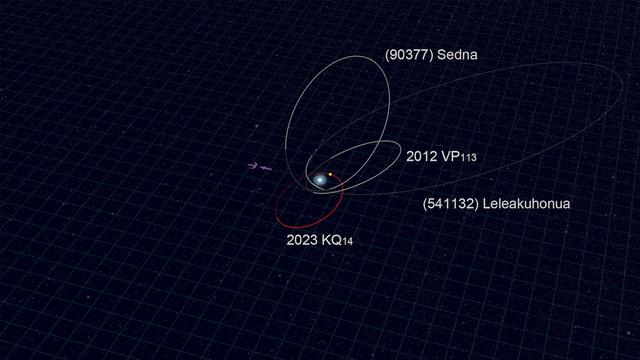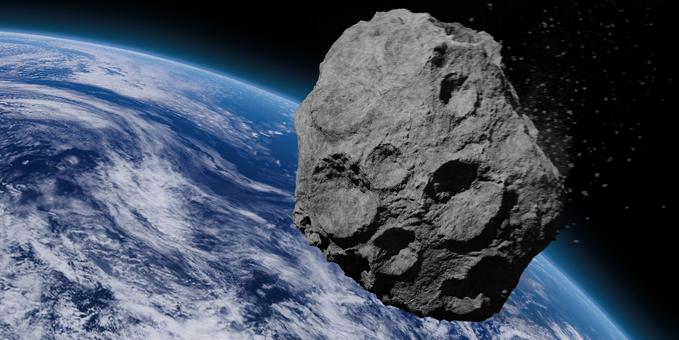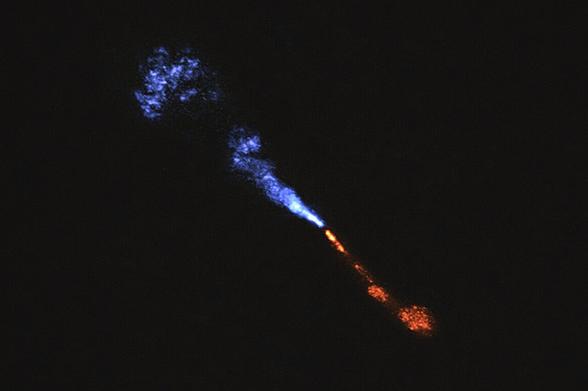#astronomy
Astronomers have discovered a “fossil” body nicknamed Ammonite on the outskirts of the solar system. Read more from @abc:

#Astronomy question: is there a searchable database for finding the estimated age of a given star?
It's been a while since I was able to get out in clear skies. I've been working on getting my new scope setup, but in the meantime, I was able to get some shots of the Sh2-108 and NGC6910 areas in the constellation Cygnus. What a beautiful area of the sky!
#planewave #lightbucketastro #astronomy #nebula
Another asteroid (2022 YS5) made a flyby of Earth - learn more about this near-earth object and how it relates to Mike.Sierra.Echo.

Astronomers capture the birth of planets around a baby sun outside our solar system https://phys.org/news/2025-07-astronomers-capture-birth-planets-baby.html #Astronomy

"Lunar Nearside" is #NASA #astronomy picture of the day for 2025-07-20 - a composite of 1300+ images from NASA GSFC, Arizona State University and the Lunar Reconnaissance Orbiter (LRO) shows the entire near side of the #Moon in stunning and clear detail. https://apod.nasa.gov/apod/ap250720.html
By the way, the #interstellar #comet 3I/2025 N1 (ATLAS) is on my free Bright Comets #iOS app, in case you want to know where it is right now. Spoiler: it's still very faint at 16 mag. But it should brighten up to 12 mag by October.
This week in “Let’s Make Asimov Roll in His Grave”, er, “Foundation”:
Comets that stay *put*!
#BadAstronomy #Astronomy #Foundation
2/
Timeline for next 5 billion years
(make sure to make notes in your diaries)
via pangeen
Timeline for next 5 billion years
1/
Which event(s) would you like to witness if you became immortal?
Via Unlocking SpaceTime
via pangeen
Maanfoto van de dag: Twin Peaks. Fotoinfo: https://www2.lpod.org/wiki/July_20,_2025 #astronomie #astronomy #sterrenkunde #space #maan #moon #lpod
Orbit the Moon! - LROC WAC Global Mosaic and DTM
The Lunar Reconnaissance Orbiter Camera (LROC) WAC is a push-frame camera that captures seven color bands (321, 360, 415, 566, 604, 643, and 689 nm) with a 57-km swath (105-km swath in monochrome mode) from a 50 km orbit. One of the primary objectives of LROC is to provide a global 100 m/pixel monochrome (643 nm) base map with incidence angles between 55°-70° at the equator, lighting that is favorable for morphological interpretations. Each month, the WAC provides nearly complete coverage of the Moon under unique lighting. As an added bonus, the orbit-to-orbit image overlap provides stereo coverage. Reducing all these stereo images into a global topographic map is a big job, and is being led by LROC Team Members from the German Aerospace Center (Deutsches Zentrum für Luft- und Raumfahrt; DLR). Several preliminary WAC topographic products have appeared in LROC featured images (Orientale basin, Sinus Iridum). For a sneak preview of the WAC global DEM with the WAC global mosaic, view a rotating composite Moon (Full Res).
The global mosaic comprised of over 15,000 WAC images acquired between November 2009 and February 2011. The non-polar images were map projected onto the GLD100 shape model (WAC derived 100 m/pixel DTM), while polar images were map projected on the LOLA shape model. In addition, the LOLA derived crossover corrected ephemeris, and improved camera pointing, provide accurate positioning (100 m) of each WAC image.
CREDIT
LROC
WAC
DLR
https://www.europesays.com/2260709/ Astronomers in the Netherlands witness dawn of new solar system #AstronomersNetherlands #astronomy #AstronomyNetherlands #DutchAstronomers #DutchResearch #DutchResearchers #eső #EsoNewSolarSystem #EuropeanSouthernObservatory #Hops135SolarSystem #hops135 #LeidenUniversity #LeidenUniversityNewSolarSystem #Nederland #netherlands #NewSolarSystem #Nieuws
Amateur Astronomie foto van de dag: Mosaic of the Mare Imbrium Region. Foto info: https://www.aapod2.com #astronomie #sterrenkunde #fotografie #sterrenkijken #aapod #heelal #universum #sterren #astronomy
Ich habe letzte Nacht vom Balkon aus den Sternenhimmel fotografiert. Bilde ich es mir nur ein oder ist da tatsächlich etwas Milchstraße im Hintergrund? Laut PhotoPills verlief die auch genau dort lang.
Wenn nicht, dann war es auch so ein schöner Nachthimmel.
Tidal locking
results in the Moon rotating about its axis in about the same time it takes to orbit the Earth. Except for libration effects, this results in it keeping the same face turned towards the Earth, as seen in the figure on the upper left. (The Moon is shown in polar view, and is not drawn to scale.)
+ Upper left:
> If the Moon didn't spin at all, then it would alternately show its near and far sides to the Earth while moving around our planet in orbit.
+ Upper right:
> If rotational frequency is larger than orbital frequency, a small torque counteracting the rotation arises, eventually locking the frequencies (situation depicted in green)
+ Down left:
> A simulation shows the variability in the portion of the Moon visible from Earth due to libration over the course of an orbit. Lighting phases from the Sun are not included.
+ Down right:
> Animation of the Moon as it cycles through its phases. The apparent wobbling of the Moon is known as libration
From Wikipedia, the free encyclopedia
CREDITS
Contributors to Wikimedia projects
* Stigmatella aurantiaca
* Jim McKeeth
* Tom Ruen
* Poopooman-ger
2025 June 28
Lunar Farside
* Image Credit: NASA / GSFC / Arizona State Univ. / Lunar Reconnaissance Orbiter
https://www.nasa.gov/
https://www.gsfc.nasa.gov/
https://lroc.sese.asu.edu/index.html
Explanation:
Tidally locked in synchronous rotation, the Moon always presents its familiar nearside to denizens of planet Earth. From lunar orbit, the Moon's farside can become familiar, though. In fact this sharp picture, a mosaic from the Lunar Reconnaissance Orbiter's wide angle camera, is centered on the lunar farside. Part of a global mosaic of over 15,000 images acquired between November 2009 and February 2011, the highest resolution version shows features at a scale of 100 meters per pixel. Surprisingly, the rough and battered surface of the farside looks very different from the nearside covered with smooth dark lunar maria. A likely explanation is that the farside crust is thicker, making it harder for molten material from the interior to flow to the surface and form dark, smooth maria.
TOPIC> The Moon
2025 July 20
Lunar Nearside
* Image Credit: NASA / GSFC / Arizona State Univ. / Lunar Reconnaissance Orbiter
https://www.nasa.gov/
https://www.gsfc.nasa.gov/
https://lroc.sese.asu.edu/index.html
Explanation:
About 1,300 images from the Lunar Reconnaissance Orbiter spacecraft's wide angle camera were used to compose this spectacular view of a familiar face - the lunar nearside. But why is there a lunar nearside? The Moon rotates on its axis and orbits the Earth at the same rate, about once every 28 days. Tidally locked in this configuration, the synchronous rotation always keeps one side, the nearside, facing Earth. As a result, featured in remarkable detail in the full resolution mosaic, the smooth, dark, lunar maria (actually lava-flooded impact basins), and rugged highlands, are well-known to earthbound skygazers. To find your favorite mare or large crater, just follow this link or slide your cursor over the picture. The LRO images used to construct the mosaic were recorded over a two week period in December 2010.
https://lroc.im-ldi.com/visit/exhibits/1/gallery/17
APOD from 2025-07-20
#Lunar Nearside
Over 1,300 images from the Lunar Reconnaissance Orbiter were combined to create a detailed view of the #Moon's nearside. This side always faces #Earth due to synchronous rotation, caused by tidal locking with a 28-day orbit/rotation period. The mosaic reveals lunar maria and highlands familiar to observers on Earth.
HD image at https://apod.nasa.gov/apod/ap250720.html#space #astronomy
